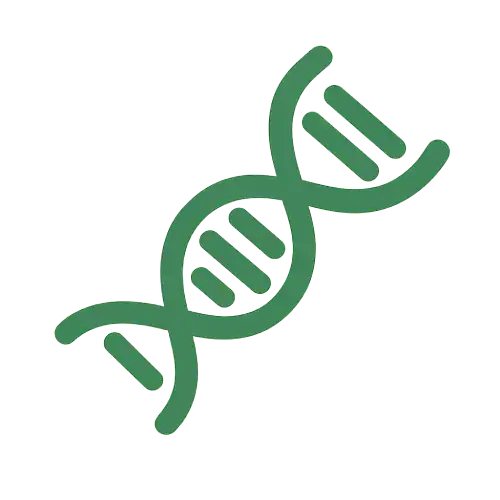The story didn’t start with you. But it can change with you.
Long before your first memory, your nervous system was already adapting — scanning for danger, absorbing tension, learning the unspoken rules of your environment. Even before you had words, your body was fluent in survival.
Maybe you push yourself to be perfect, but nothing ever feels good enough. Or maybe conflict shuts you down, and you don’t know why.
These feelings may not have started with you.
They could be inherited patterns, passed down silently through generations that never had the tools to heal.
This is generational trauma. It can shape how you respond to stress, how you trust, how you love and how you see yourself.
But the cycle can stop here.
This guide will help you recognize the signs, understand where they come from and begin the work of healing. What you’ve inherited doesn’t have to define you. You get to choose a new path — one grounded in awareness, care and change.
What Is Generational Trauma?
Generational trauma — sometimes called intergenerational trauma — is emotional or psychological pain that gets passed down within families. It can subtly shape how we think, feel and respond to the world, often without even realizing it.
This kind of trauma is typically passed on in two key ways:
- Learned behaviors: We often absorb how our caregivers handle stress, express emotions or relate to others. These patterns can feel normal, even when they’re harmful.
- Biology: Research in epigenetics shows that trauma can influence how certain genes function, especially those related to stress and emotion.
These inherited imprints can affect your sense of safety, your relationships and how you show up in the world.
What Keeps the Cycle Alive?
Generational trauma isn’t just passed down through major events — it’s sustained by the roles we adopt, the beliefs we inherit and the silences we keep. It lives in the everyday, in the things we don’t question.
- Family Rules That Silence Pain: Avoidance often masquerades as tradition. Phrases like “We don’t talk about that” or “That’s just how they are” protect pain instead of healing it. In these families, silence becomes the rule and honesty feels like betrayal. But research shows that emotionally attuned, empowered parenting, especially from fathers, can interrupt this pattern and foster resilience.
- Cultural Norms That Glorify Stoicism: Many cultures celebrate endurance; emotional restraint, self-sacrifice and relentless productivity as signs of character and strength. And in many ways, they are. But this kind of resilience often comes at a quiet cost: needs go unspoken, pain gets buried and vulnerability is seen as weakness. Endurance becomes the standard, while emotional truth is sidelined. Healing begins when we expose these expectations for what they are — survival strategies — and create new norms that make space for authenticity, rest and care.
These patterns began long before you. But they continue when no one names them.
Calling them out interrupts the cycle. Clarity builds the bridge to change.When you name what’s been inherited, you choose a new direction — one grounded in awareness, choice and strength.
Can Trauma Be Passed Down Through DNA?
Nearly 70% of adults in the U.S. have experienced at least one traumatic event. Trauma changes how the body reacts to stress. But does it actually change our DNA?
Not directly.
Trauma doesn’t change your DNA itself, but it can affect how certain genes function. Stress and trauma can influence how your body responds to future challenges.
These changes can be passed on, affecting how future generations process stress, regulate emotions and respond to adversity.
One of the most studied examples involves children of Holocaust survivors. Research led by Dr. Rachel Yehuda has shown that both survivors and their children exhibit changes in genes linked to the body’s stress response — including the FKBP5 gene, which regulates cortisol. Even without direct exposure to trauma, the next generation often carried heightened stress sensitivity in their biology.
Similar patterns have been observed in communities affected by racism, colonization and displacement. Indigenous populations, African American communities and descendants of refugees have all shown signs of trauma-related health disparities, both mental and physical. These aren’t just the effects of lived experience; they’re echoes of trauma encoded in the body.
But this isn’t a life sentence.
Epigenetic changes are not permanent. They can shift. They can heal.
You may carry pain that began before you were born, but with the right tools and support, you can break the pattern. You have the power to interrupt what was passed down and begin a new chapter — one built on clarity, healing and choice.
You may have been born into the aftermath. But you can lead the repair.
Why Breaking Generational Trauma Matters for You and Your Community
Generational trauma spreads like a silent inheritance: shaping relationships, communities and culture until someone stops the cycle.
One way to measure its impact is through Adverse Childhood Experiences (ACEs): events like abuse, neglect or household dysfunction that rewire how a child sees the world.
These experiences are widespread. Nearly two-thirds of U.S. adults report at least one.
One in four report multiple. This means millions are carrying inherited pain often without knowing where it started.
Trauma doesn’t stay contained.
One person’s wound can ripple outward how an entire family learns to love, fight and stay silent. Patterns like shutdown, anxiety and shame often pass for personality or resilience. But they carry inherited pain.
Even success can carry this imprint. High achievers often bear the weight of inherited pressure. What looks like grit may be fear in disguise — a belief that worth must be earned and safety is conditional.
The data is sobering:
Those with four or more ACEs face:
- 4-12x higher risk for substance use, suicidal thoughts or attempts
- 2-4x higher risk for chronic illness, smoking and STIs
- Significantly greater chances of developing heart disease, cancer and autoimmune disorders
This is where trauma hides:
In tension-filled bodies. In families that go silent when things hurt. In systems that punish symptoms but ignore their origin.
But healing is possible. And it doesn’t happen alone.
While therapy offers powerful tools, community support often carries equal weight. Cultural traditions, spiritual spaces, group healing and peer connection all create space for recovery and belonging.
Healing reclaims more than peace of mind, it disrupts a legacy of pain.
That choice doesn’t only transform your path. It reshapes the lives of everyone connected to you.
The Many Faces of Generational Trauma

Generational trauma takes many forms.
It shapes how people relate, cope and make everyday choices often without realizing where those patterns began. The damage isn’t always loud or obvious. Sometimes it hides in silence, in what families avoid and in the roles passed down without question.
These are three core ways generational trauma often plays out:
|
|
What It Means | How It Shows Up |
|---|---|---|

|
Pain passed down through family dynamics shaped by abuse, neglect, addiction, or chronic dysfunction. |
|

|
Trauma experienced by a group or community due to shared lived conditions—like racism, poverty, or forced migration. |
|

|
Trauma passed down from large-scale, identity-shaping events — like slavery, war, colonization, or genocide. |
|
Type of Generational Trauma

Pain passed down through family dynamics shaped by abuse, neglect, addiction, or chronic dysfunction.
- Difficulty setting boundaries or expressing needs
- Repeating painful relationship patterns
- Caretaking as identity
- Higher risk of mental illness or addiction

Trauma experienced by a group or community due to shared lived conditions—like racism, poverty, or forced migration.
- Constant vigilance about safety or belonging
- Internalized pressure to overachieve
- Emotional burnout from cultural code-switching
- Heightened stress responses

Trauma passed down from large-scale, identity-shaping events — like slavery, war, colonization, or genocide.
- Disconnection from ancestry or cultural practices
- Limiting beliefs tied to identity (e.g., “people like me don’t succeed”)
- Mistrust of dominant institutions or authority
How to Recognize the Signs of Generational Trauma in Your Life

Generational trauma doesn’t always announce itself. It shows up in behaviors, reactions and beliefs that feel second nature often without explanation.
When families bury their pain, that silence mutates into behavior. Into numbness, shame or distance. Many people say, “This is just how I am,” when they’re really reenacting the survival strategies their family once needed to endure.
What feels like identity is often inherited adaptation.
Below are four key ways inherited trauma may be shaping your life right now:
1. Emotional Suppression and Avoidance
When expressing emotion led to judgment, rejection or punishment in your family, silence became self-protection. You didn’t stop feeling — you just learned it was safer not to show it.
In homes where pain goes unnamed, silence becomes the unspoken rule. But emotions don’t vanish — they go underground, where they wait to be passed on.
How it shows up:
- You feel numb, shut down or disconnected from your own experience
- You hesitate to ask for help, even when you feel overwhelmed
You mask distress with calm, saying “I’m fine” while tension builds underneath
2. Unhealthy Relationship Dynamics
If love came with conflict, control or unpredictability, connection may now feel unsafe. Speaking your truth felt dangerous, so you learned to avoid conflict — even at the cost of yourself.
Keeping the peace often meant abandoning your own needs.
How it shows up:
- You prioritize others while ignoring your own needs
- You avoid difficult conversations to protect yourself from fallout
- You try to hold boundaries, then back down under guilt or pressure
Survival taught you to shrink, defer and smooth things over.
But survival mode doesn’t build healthy relationships. Healing means learning new ways to show up; ways that honor both you and the people you care about.
3. Chronic Anxiety and Hypervigilance
Living in chaos teaches your nervous system to expect threat at every turn. Even long after the danger is gone, your body stays braced — scanning for what might go wrong.
How it shows up:
- You feel anxious during moments that should feel safe
- You wait for things to fall apart, even when nothing seems wrong
- You struggle to relax, trust or feel at ease around people who’ve earned it
When fear becomes your default setting, calm can feel unfamiliar — even unsafe.
Healing means teaching your body and mind to self-regulate toward calm, to embody it fully and to grow comfortable in its presence.
4. Guilt and Shame as Emotional Defaults
In families where guilt was used to control or shape behavior, love often came with conditions. You learned that being good meant staying small, agreeable and self-sacrificing.
How it shows up:
- You question your worth, even when you’ve done nothing wrong
- You second-guess every decision, afraid to disappoint or disrupt
- You feel guilty for saying no, setting limits or putting yourself first
You weren’t born feeling unworthy — that script was handed down.
But guilt is not a guide. It’s your nervous system stuck in old survival roles.
Healing begins when you choose self-respect over self-blame.You can’t break a cycle you don’t see. Awareness is the first act of freedom.
Looking For Therapy?
Start Healing Today.
212-960-8626
When Generational Trauma Affects Your Mental Health

Trauma doesn’t fade with time. Left unhealed, it rewires how you think, feel and connect. Inherited pain doesn’t always feel like trauma, it often shows up as symptoms you can’t explain.
Here’s how generational trauma may be shaping your mental and emotional health:
- Anxiety and Hypervigilance: Growing up in fear conditions the nervous system to stay on high alert. Even in calm moments, your body may remain braced — waiting for something to go wrong. Deep breathing feels hard. Trust feels risky. Safety feels unfamiliar.
- Depression and Emotional Numbness: When emotional expression was unsafe or ignored, shutting down became the only option. You may feel stuck, invisible or detached — not because you’re empty, but because you’ve carried too much for too long.
- PTSD and Complex Trauma: Sometimes, trauma doesn’t start with your own story. Pain from war, displacement or violence in past generations can echo through your body and mind. Flashbacks, shutdowns or overwhelming reactions may reflect trauma that was never named — but deeply felt.
- Attachment and Relationship Struggles: Early relationships set the blueprint for how you connect. If love came with inconsistency, control or neglect, closeness may now feel like a threat. You might crave intimacy but push people away or feel safest in isolation.
- Addiction and Numbing Behaviors: In families where emotions weren’t welcome, you learned to disappear. Work, alcohol, food or screens can offer escape routes. These behaviors often grow from unspoken emotional rules.
- Body Image and Eating Disorders: Control around food or appearance often begins with family messaging. If you grew up around shame, scarcity or strict rules about bodies, you may still carry that tension today. The drive to shrink, punish or perfect the body often reflects deeper attempts to feel safe.
- Chronic Stress and Physical Symptoms: The body holds what the mind avoids. Headaches, fatigue, gut issues or chronic pain can reflect a system still stuck in defense mode. Long-term stress, especially inherited, can reshape how your body functions and feels every day.
- Perfectionism and Overworking: When love came with conditions, perfection became protection. You may push through exhaustion, chase flawless results or avoid slowing down. Under ambition often sits a learned fear: fall short and lose connection.
Recognizing these patterns as survival strategies opens the door to real change. These responses may have been passed down, but they don’t define you.
With the right support — through therapy, reflection, community and consistent practice — you can release what never belonged to you.
Legacy doesn’t begin with what you inherit. It begins with what you change.
5 Steps to Start Healing Generational Trauma

The cycle doesn’t break with time. It breaks with intention, awareness and action.
You don’t need to see the whole path, just take the next step forward. With support, clarity and care, you can shift patterns that may have shaped your family for generations.
Step 1: Identify the Patterns
Start by naming what lives beneath the surface. The patterns you repeat didn’t begin with you, but they keep playing out through you.
Ask yourself:
- What behaviors or beliefs seem to echo through my family?
- Do my reactions feel bigger than the moment in front of me?
Therapy can help you connect the dots between past and present, so those patterns no longer run the show.
Step 2: Build Secure Relationships
Safety starts with trust, not performance.
When trauma shaped your early attachments, connection may now feel like a risk. You might pull away, control too tightly or lose yourself in others.
Healing relationships means first learning to trust yourself, then building steady, mutual trust with others.
With support, you can:
- Understand your attachment style
- Set boundaries without guilt
- Practice vulnerability in safe, steady relationships
Trust grows where safety is nurtured, not demanded.
Step 3: Reparent Yourself
The child you once were needed comfort, protection and care. If those needs went unmet, you likely adapted by becoming the caretaker, the achiever or the invisible one. Reparenting means giving yourself what your caregivers couldn’t — on your terms, in your own time.
This inner child work involves:
- Listening to the younger parts of you with compassion
- Meeting emotional needs with care, not critique
- Making choices that honor your worth and wellbeing
This isn’t regression. It’s about reclaiming the parts of you that never got a chance to feel whole.
Step 4: Create New Behavioral Patterns
Letting go of old patterns only matters when you build something better in their place. Healing requires action: repeated, intentional and aligned with the life you want to live.
Therapy can support you to:
- Recognize and disrupt inherited d thought loops
- Strengthen emotional regulation skills
- Replace survival habits with behaviors rooted in personal choice
Change doesn’t demand perfection. It requires consistency and courage.
Step 5: Reconnect with Cultural Identity and Heal Ancestral Wounds
Trauma often comes with cultural loss: stories erased, traditions forgotten, roots severed. Healing invites you to reclaim what was taken.
Cultural healing doesn’t stop at the personal. It restores connection to something deeper: a sense of origin, continuity and meaning.
For many, this means facing the ways disconnection has shaped identity — whether through migration, generational silence, forced assimilation or simply the slow erosion of tradition over time.
This work can include:
- Exploring your heritage, language or spiritual practices
- Reconnecting with values, rituals or wisdom passed down through generations
- Finding or creating community that reflects your full identity
These practices aren’t aesthetic — they’re grounding. They offer connection, regulation and meaning where clinical tools alone often can’t reach.
Belonging isn’t earned through performance. It’s remembered through reconnection.
From Pain to Healing: How Therapy Rewrites Your Story

You didn’t choose the pain. You still hold the power to end it.
Every time you respond with intention — instead of reenacting old patterns — you disrupt a cycle that may have shaped your family for generations. Healing generational trauma doesn’t just change your life. It changes what the next generation inherits.
Therapy helps make that shift possible. Working with a skilled therapist gives you space to face pain without apology and build a life that no longer runs on fear.
You don’t need to know all the answers. Take one clear step forward. That’s how change begins.
Whether you’re returning to therapy or considering it for the first time, healing can meet you where you are and move with you from there. These are some approaches many people find effective when working through generational trauma:
Trauma-Informed Therapy
This approach addresses how past trauma drives current behavior, reactions and emotional patterns. Research shows that trauma-informed care can lead to major reductions in symptoms of PTSD, depression and anxiety especially when delivered with cultural awareness and respect.
Therapists trained in trauma-informed care focus on:
- Building a sense of emotional and physical safety
- Identifying trauma responses (fight, flight, freeze, fawn)
- Learning to feel more calm, grounded and in control
Trauma-informed therapy lays the foundation for healing by meeting the body where it lives — on high alert — and gently leads it toward trust.
Somatic Therapy
Trauma doesn’t always speak through thoughts, it often shows up first in the body. Tension, chronic pain or fatigue can carry unspoken stories that never found words.
Somatic approaches like Somatic Experiencing and Sensorimotor Psychotherapy use breathwork, movement and grounding to release stored stress and emotional pain. These techniques engage the nervous system directly, helping you process what talking alone can’t reach.
Studies show Somatic Experiencing can significantly reduce symptoms of PTSD and depression. This work rebuilds a sense of internal safety and regulation especially when the body holds memories the mind can’t explain.
Eye Movement Desensitization and Reprocessing (EMDR)
EMDR targets distressing memories and helps the brain reprocess them, reducing their emotional intensity and disrupting the patterns they once triggered.
Originally developed for PTSD, this method has proven effective across a wide range of trauma-related symptoms. Studies show EMDR consistently lowers symptoms of PTSD and depression, with strong results across diverse populations and trauma histories.
By helping your brain work through what happened, EMDR can make it easier to stay grounded in the present.
Internal Family Systems (IFS) Therapy
IFS breaks down the inner world into distinct parts; each with its own voice, role and history.
- Wounded parts carry pain from the past
- Protective parts try to keep you safe
- Your core Self is calm, compassionate and capable of leading healing
This method teaches you how to listen to these parts without judgment, build trust between them and shift from internal conflict to internal connection.
Research supports IFS as a powerful approach for reducing symptoms of PTSD, depression and dissociation, especially in adults with histories of childhood trauma.
By creating space for every part of you, especially the ones that feel hurt, guarded or lost, IFS helps you build a relationship with yourself rooted in compassion and clarity. Healing begins when you stop fighting yourself and start leading from your center.
Inner Child Work
Unmet childhood needs often shape how adults react, relate and protect themselves. Inner child work reconnects you with the parts of yourself that learned to cope through silence, perfectionism or self-blame and gives those parts what they never received.
Reparenting means stepping in for the support you didn’t get. This work involves:
- Naming emotional wounds that shaped your behavior
- Meeting those needs with care, protection and boundaries
- Replacing survival patterns with responses grounded in choice
Research on approaches like Healing the Child Within shows clear reductions in anxiety and depression, underscoring the impact of addressing early emotional pain directly.
The goal isn’t to revisit suffering.
The goal is to meet that younger self with the support that should have been there all along. Healing begins when you stop abandoning the parts of you that had no one else to rely on.
Cognitive Behavioral Therapy (CBT) & Trauma-Focused CBT (TF-CBT)
CBT targets the beliefs and thought patterns that trauma distorts. It trains you to recognize self-defeating narratives and replace them with perspectives rooted in reality, not fear.
TF-CBT builds on that foundation by adding trauma-specific tools to manage emotions, process painful memories and rebuild a sense of control.
Research consistently ranks TF-CBT among the most effective evidence-based treatments for PTSD, especially through methods like Cognitive Processing Therapy and Prolonged Exposure.
By shifting how you interpret your past, CBT clears space to respond to the present with awareness, stability and strength.
Mindfulness and Meditation
Mindfulness trains your nervous system to slow down, observe and stay grounded in the present. Practices like body scans, breathwork and guided meditation help separate old survival patterns from what’s happening now, restoring emotional clarity and regulation.
Studies show mindfulness-based therapies significantly reduce PTSD symptoms and strengthen brain pathways linked to focus, resilience and recovery.
These tools pair well with trauma-focused treatment by building stability from the inside out.
Mindfulness gives you the tools to stop repeating old scripts and start choosing how you respond. This work moves you closer to who you are, not just who you were taught to be.
You may not have chosen the pain but you can choose what happens next.
The Power of Breaking Generational Trauma: A Gift to Future Generations

New research confirms what many have felt firsthand: post-traumatic growth isn’t just recovery; it’s transformation.
True healing reshapes identity at the root. It changes how you see yourself, how you show up in relationships and how you move through the world. When you heal generational trauma, the impact ripples outward.
Healing generational trauma rewrites your legacy and lays the foundation for resilience, clarity and emotional strength for you and future generations.
You didn’t choose the pain that shaped your family.
But you hold the power to end its grip. This work isn’t just about change. It’s about return — reclaiming the parts of you that were never protected, never named, never allowed to fully exist.
Breaking the cycle takes courage.
It means facing what was passed down and choosing something more aligned, more honest, more you.
That choice doesn’t just free you. It reshapes the emotional blueprint of future generations.
When you do this work, you model something powerful:
That safety is possible.
That worth isn’t earned.
That healing is real.
You become the one who turned pain into strength — and left a new path behind.
This work honors who you are and who you’re becoming. You don’t have to do it alone.
When you’re ready, we’ll walk with you.

